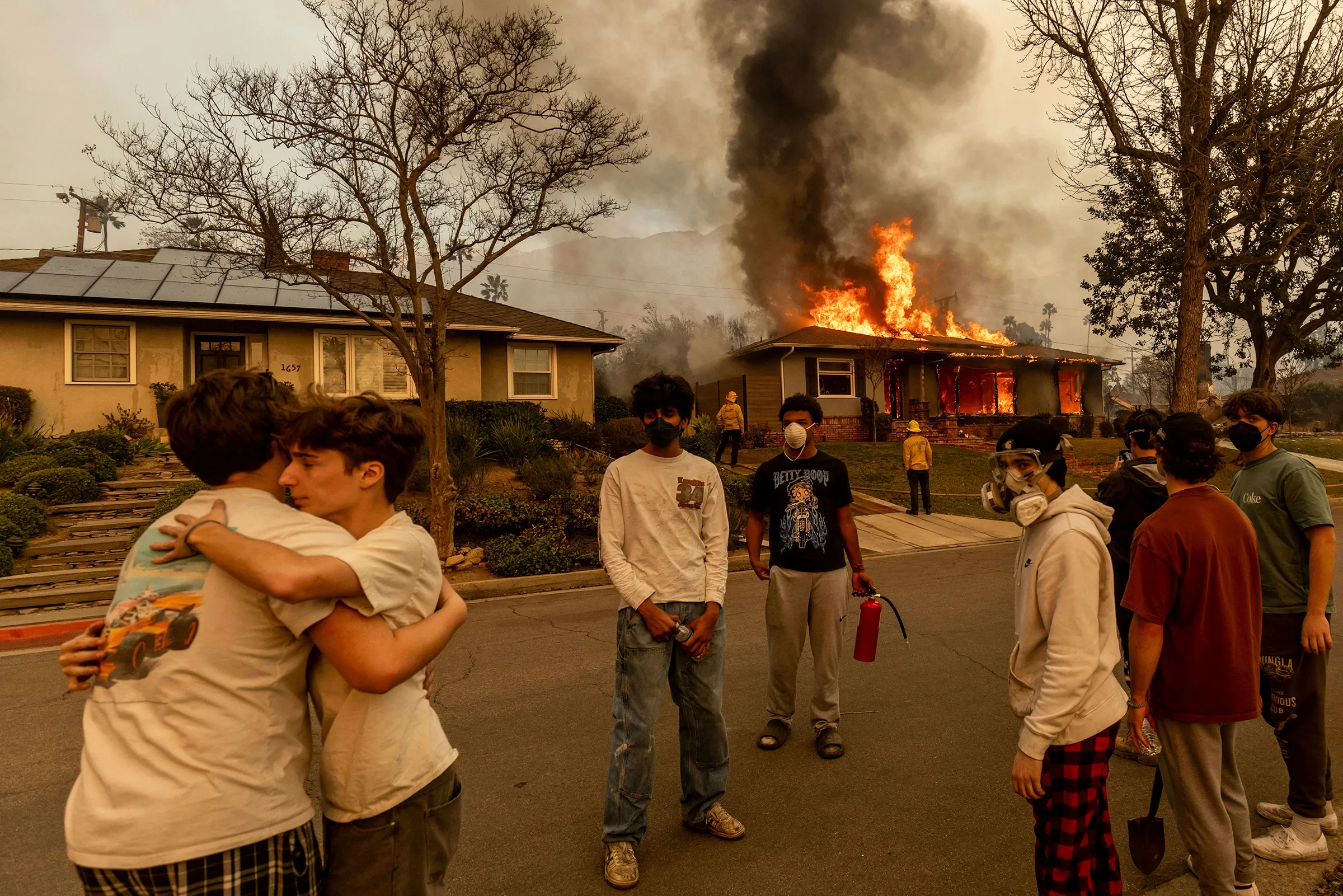

Impact of the Greater Los Angeles wildfires
Introduction
As plumes of smoke envelop the skies above Greater Los Angeles, we’re reminded of the devastating power of wildfires and the urgent need to confront the factors fueling these blazes. The LA wildfires, ignited amidst a particularly dry season, have left thousands scrambling for safety, choking the air with ash and impacting communities across the region.
Understanding the Cause
Wildfires in California are nothing new, but their intensity and frequency have surged in recent years. This year’s inferno stems from a combination of human activity, climate change, and natural conditions. Persistent drought, coupled with high temperatures, has left vegetation parched and vulnerable. When powerful Santa Ana winds sweep across the region, a single spark—from faulty power lines, campfires, or even carelessness—can erupt into an uncontrollable blaze.
What’s Happening Now
The current wildfires have scorched tens of thousands of acres, destroying homes, wildlife habitats, and vital infrastructure. Emergency services are battling the flames with aerial support, bulldozers creating firebreaks, and round-the-clock firefighting teams. Evacuation orders have been issued for thousands, with shelters struggling to accommodate displaced families.
Meanwhile, air quality has plummeted. Residents as far as Orange County and the Inland Empire are experiencing respiratory issues, while schools and businesses shut their doors to minimize health risks. Yet, the flames persist, fueled by the winds that show no sign of abating.
Efforts to Resolve the Crisis
Local authorities, firefighters, and community volunteers are working tirelessly to contain the spread. Evacuation routes have been established, and relief efforts are pouring in. Donations of food, clothing, and medical supplies have reached evacuees, while animal shelters care for displaced pets. Governor Newsom has mobilized additional resources, declaring a state of emergency to expedite aid.
At the same time, firefighting crews from neighboring states have arrived, highlighting the collective resilience of communities in times of crisis. Modern tools like satellite imaging and AI are aiding teams in tracking the wildfire’s unpredictable path, offering hope amidst the chaos.
The Human Toll
Beyond the physical damage lies a deeper emotional impact. For families who’ve lost homes, cherished memories have gone up in flames. Communities are grappling with anxiety, mourning the loss of normalcy and the looming threat of future disasters. The economic strain—especially for small businesses—is profound, as they face closures and disruptions in an already fragile economy.
Looking Ahead: Preventing Another DisasterLooking Ahead: Preventing Another Disaster
We can’t afford to treat these wildfires as isolated incidents. They’re a clarion call to address climate change and rethink land management practices. Moving forward, California must prioritize:
1. Proactive Vegetation Management: Increased funding for controlled burns and removal of dry underbrush can prevent small fires from becoming infernos.
2. Investment in Fire-Resistant Infrastructure: Upgrading power grids and constructing fire-resistant homes can mitigate risks.
3. Community Preparedness: Educating residents on fire safety and ensuring evacuation plans are in place can save lives.
4. Combating Climate Change: Reducing greenhouse gas emissions is paramount. Wildfires are not merely natural disasters; they’re a symptom of a warming planet.
Conclusion
As we confront these fires, it’s clear that this is more than an environmental challenge—it’s a call to action. For Los Angeles and beyond, resilience lies in preparation, collaboration, and the commitment to safeguard our communities and ecosystems for future generations.
Click the button above to support our movement towards environmental justice!